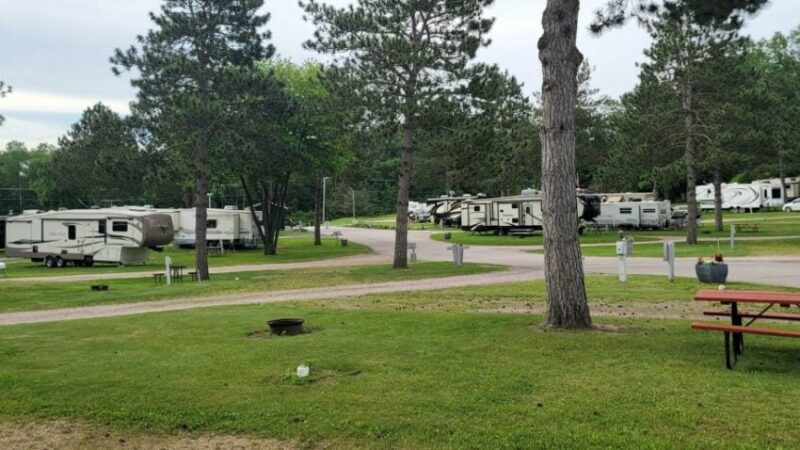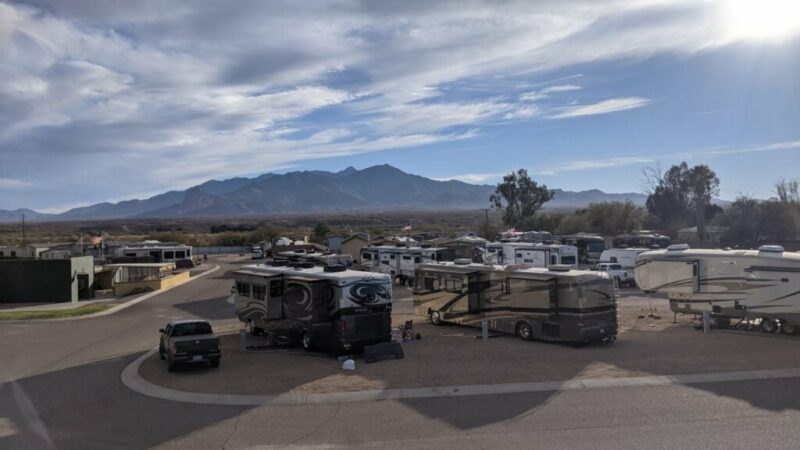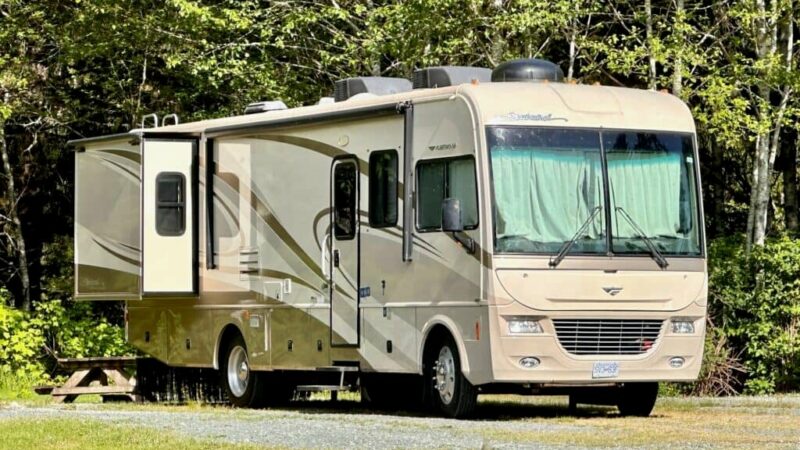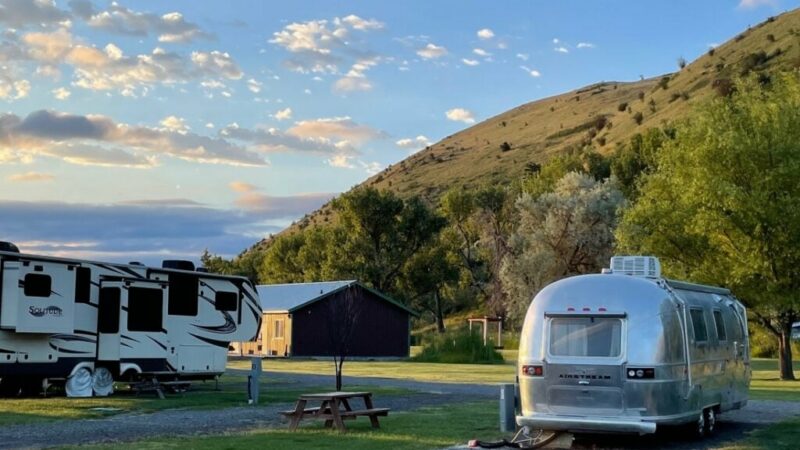Driving The Moki Dugway
Beware of the Moki Dugway! That was the title of an article I wrote more than 10 years ago concerning an “undeveloped” section of Highway 261 in Southeastern Utah known as the Moki Dugway and our decision not to tow our travel trailer down it. It’s a popular bucket-list item for those who know about it. But is it a good idea to tow a trailer or drive a large motorhome on it?
What is the Moki Dugway?
You will find the Moki Dugway on Highway 261 about three quarters of the way down from its north terminus at Highway 95 near Natural Bridges National Monument. Its south terminus is located at Highway 163 near Garden of the Gods. The BLM states “The breathtaking Moki Dugway winds 1,200 feet from top to bottom on three miles of graded gravel at an 11% grade. Most vehicles can travel the route safely. Caution is advised for motorhomes or vehicles towing trailers.
The top of the Dugway reveals spectacular views. On the horizon to the east lies Sleeping Ute Mountain, near Cortez, Colorado. To the southeast is the Shiprock near Shiprock, New Mexico. To the south the Carrizo Mountains straddle the New Mexico/Arizona border. Monument Valley is southeast on the Utah/Arizona Border.”
The BLM also tells us that the Moki Dugway was built in the 1950s by Texas Zinc Minerals as a route for ore trucks hauling uranium and vanadium from Cedar Mesa to the processing mill near Mexican Hat.
History
Since bypassing the Moki Dugway years ago, my wife and I have returned to the area with our travel trailer in tow. We camped and explored the Valley of the Gods. It’s similar to nearby Monument Valley, but draws smaller crowds, is free to explore, and boondocking is allowed throughout. Valley of the Gods is at the foot of the Moki Dugway, so we decided to conquer the dugway without our trailer in tow. In addition, at the top of the Moki Dugway is Muley Point, another point of interest we wanted to visit but had bypassed on our previous visit. As we approached the base of the mesa where the dugway begins, we were greeted with an ominous warning sign.
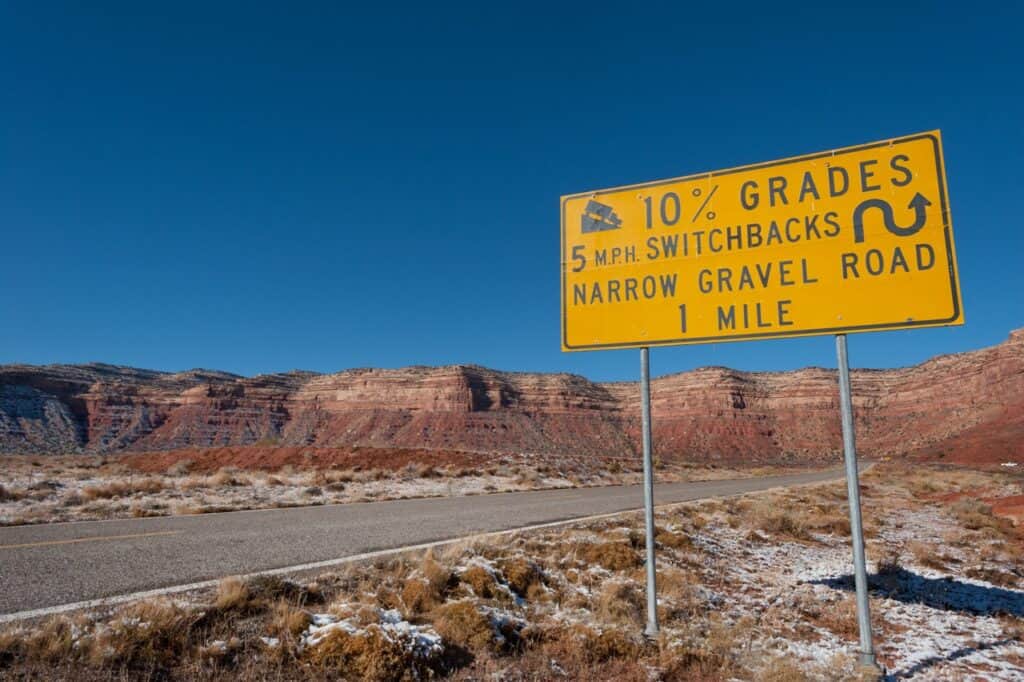
Tackling the Moki Dugway
Shortly after that was another sign stating, “Not Recommended for Trucks over 10,000 LBs, RVs – Buses–Vehicles Towing.” Additional yellow warning signs followed.
Well, that ought to get most any RVers attention, I thought. But, as we started ascending the grade, we could see a motorhome on the Moki Dugway high above on the side of a cliff.
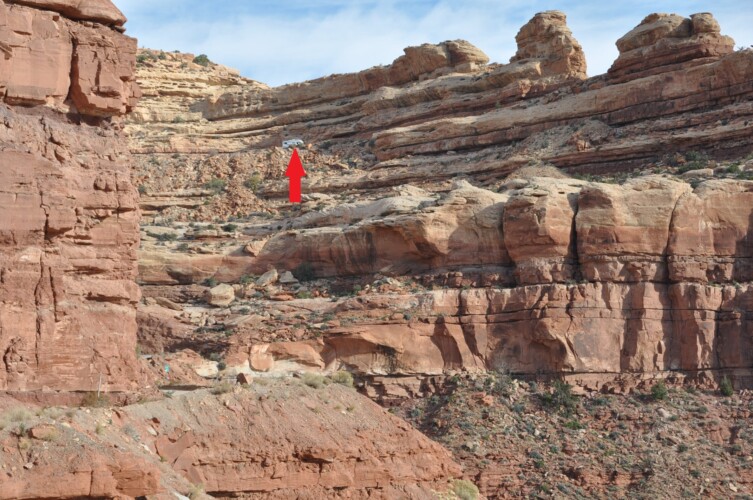
We took our time ascending the dugway, stopping often to take photos.
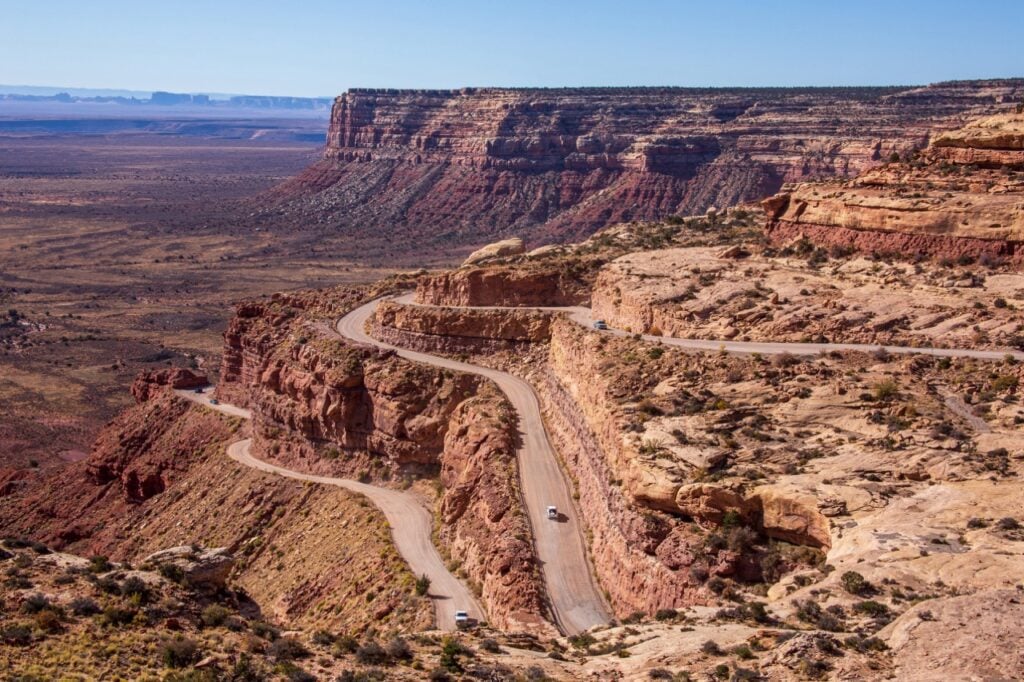
As we neared the top and pulled into an overlook, with wrecked vehicles strewn about the cliff side hundreds of feet below, we spotted a rental motorhome coming down the grade toward us.
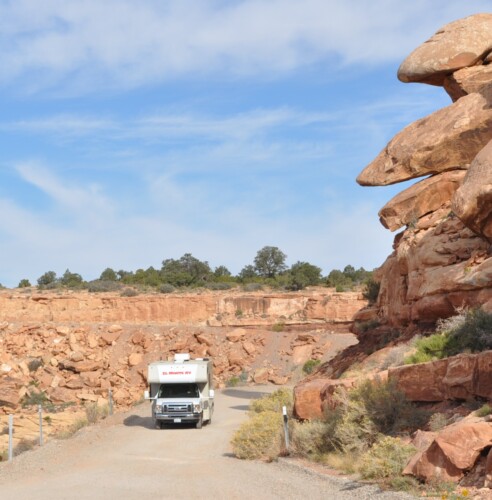
They ended up pulling into the overlook next to us. I questioned them regarding their sanity of descending the steep grade, upcoming hairpin turns, and lack of guardrails. They weren’t worried about it. I thought to myself, “Ya, it is just a rental!” as I glanced over the edge at the wrecked vehicles below. Before departing, I recommended they use low gear the rest of the way down and wished them well.
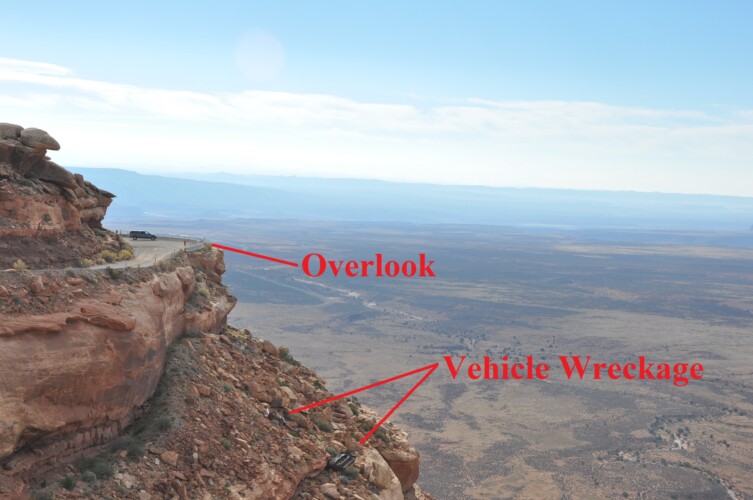
Muley Point
Once at the top of the grade, we took a narrow side road leading southwest to Muley Point. When we reached the point I was surprised at the number of RVs boondocking nearby.
The Visit Utah website describes Muley Point Overlook as “[An] amazing overlook that sits high above the goosenecks of the San Juan River and has one of the most commanding views in all of Canyon Country. The perch is 1,000 feet above the canyons below and another 1,000 on top of that to the San Juan River. This is an excellent place to get away from it all, literally. There is nothing else out here save for rocks, trees, and views.
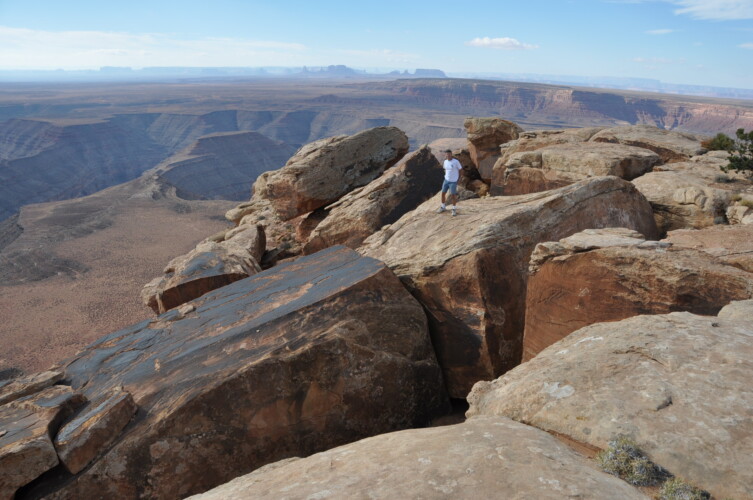
The road to Muley Point Overlook is accessible to most passenger vehicles, but there are some points that will require a bit of finesse as there are exposed rocks, most of which can be circumnavigated. But the view, which extends all the way to Monument Valley and Navajo Nation, should not be missed.”

From Muley Point we descended the Moki Dugway, again stopping frequently for pictures. We were also looking to see if there was a El Monte motorhome over the edge. We eventually returned to our boondocking site in the Valley of the Gods.
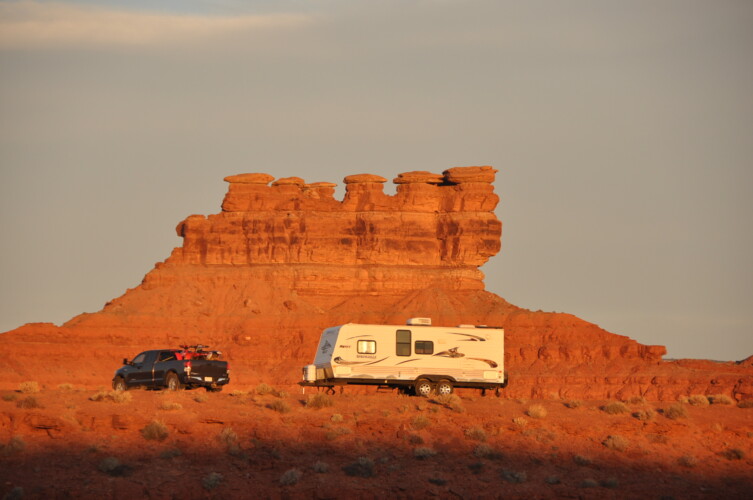
The Verdict
After again driving the Moki Dugway, I can say we made the correct decision. We would not generally feel comfortable to descend it with our travel trailer. People in motorhomes and towing trailers do it, though, but I would not recommend it. However, after driving it in both directions, I can say I would be comfortable going up when the road is dry and mud-free. It is a lot easier to stop going up a 10% grade than relying on engine compression and brakes to slow down or stop coming down a 10% grade containing 5 MPH hairpin curves.
The BLM reminds drivers of the following: “Caution: Please remain on the roadway or in the overlook areas. If you stop to take photos, please pull your vehicle completely off the road to a safe location in one of the pull-out areas along the Dugway, to allow others to pass. If you leave your vehicle to find a good spot for a photo, do so with great care.
The post Driving The Moki Dugway appeared first on RV LIFE.




